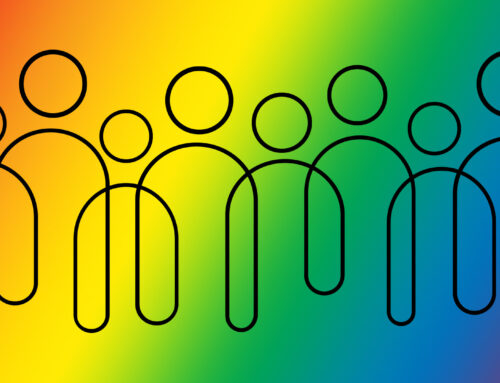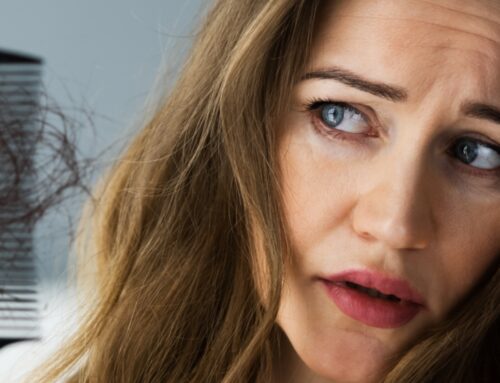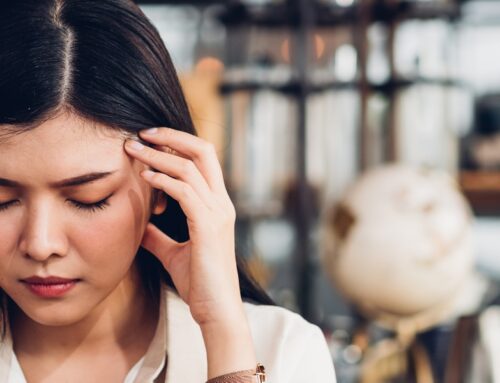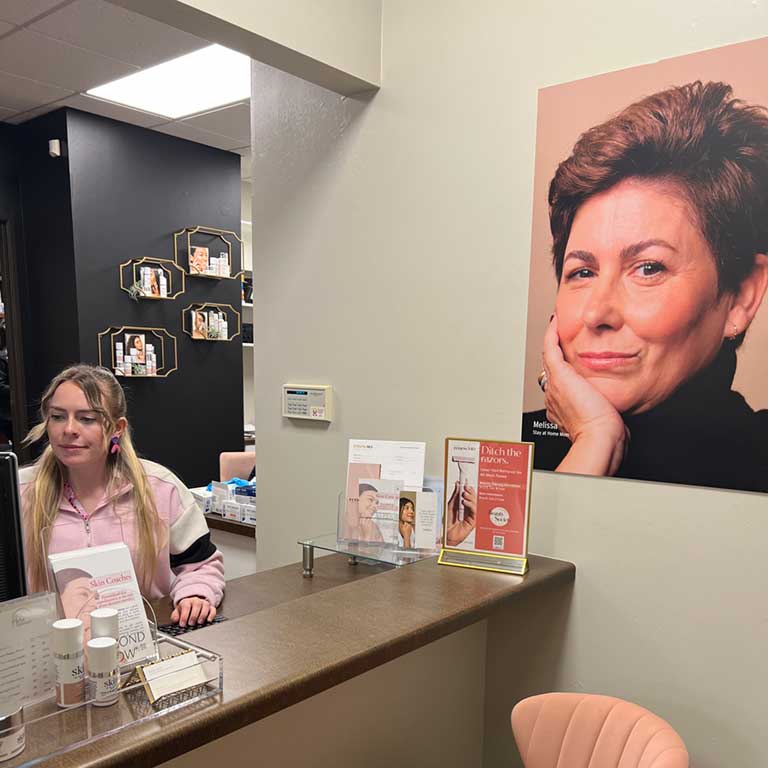Hair loss is a frequent and concerning condition affecting millions of men and women worldwide. And although it affects men more, women aren’t strangers to hair loss, with 50% of them experiencing some form of hair loss or alopecia at a certain point in their lives.
From the type of hair loss to the treatments for female pattern hair loss, there can be distinct differences between the two sexes in hair loss, all of which we’ll examine in this post.
Defining Hair Loss
According to the American Academy of Dermatology, approximately 40% of people who experience hair loss by age 40 are women. Medically known as alopecia, hair loss is a condition in which hair is lost from areas of the body where it usually grows. It can affect just one area or be widespread.
There are several types of hair loss which can occur on any part of the body and can present itself in various forms, such as:
Scarring alopecia
Also called cicatricial alopecia, it is where the hair follicles are destroyed and replaced by scar tissue, leading to severe hair loss in that area. Cicatricial alopecia is hard to treat but can be remedied with hair extensions or grafts.
Androgenetic alopecia
The most common hair loss for men, also called male pattern baldness, which is caused by the male androgen hormone dihydrotestosterone (DHT). It is also known as androgenic alopecia, and women suffer from it to lesser degrees but nonetheless do so too. Female pattern baldness involves more thinning than a receding hairline.
Telogen effluvium
When more hairs enter into the resting phase, telogen, than usual, causing general thinning over the head.
Anagen effluvium
When hair growth is disrupted due to damage to the anagen (active) phase of growth.
Traction alopecia
Caused by tension or pulling on the hair, such as wearing tight hairstyles or using harsh hair products.
The diagnosis requires a thorough health history and physical examination, including blood tests if necessary.
Depending on the cause, a treatment for hair loss may include medications such as minoxidil, finasteride, or hormones like testosterone replacement therapy.
Some treatments may include the use of topical medications, PRP therapy, or surgery.
It is important to consult a physician to determine the best treatment for hair loss, as the cause and severity of the condition must be considered.
What Causes Hair Loss in Women?
Hair loss is a common form of alopecia that affects both men and women. For women, a common form of hair loss can be androgenic alopecia. However, hormonal changes, stress, and genetics can all contribute to female hair loss.
Certain medications, such as chemotherapy drugs and anticoagulants, can cause hair loss in women.
Other causes include hormonal imbalances, autoimmune disorders, and poor nutrition.
Androgenetic Alopecia
Androgenetic Alopecia is a type of hair loss caused by the response of certain hair follicles to androgens, a hormone typically present in higher levels in males than in females.
The androgen hormones stimulate the follicles to shrink, and this causes the hair strands to become shorter and finer, eventually leading to complete baldness. This is the type of female pattern hair loss where the hair is transformed into the light, small vellus hair more common on arms and the rest of the body. It is also largely a hereditary hair loss.
Treatment options for Androgenetic Alopecia, such as Platelet Rich Plasma (PRP) therapy, can help to reduce the severity of hair loss in both men and women.
The role of Androgens
Androgens play a key role in the development of androgenetic alopecia. The most common androgen involved in FPHL is dihydrotestosterone or DHT.
DHT is produced from testosterone and is responsible for shortening the hair growth cycle and thinning the hair, which ultimately leads to a decrease in hair density and balding in the affected areas.
The role of androgen levels in male and female pattern baldness is an important factor that must be considered when considering restoring the hair growth cycle.
Birth control pills
When taking oral contraceptives, women should be aware of the potential side effects, including hair loss. Most birth control pills are composed of progestin, a synthetic form of progesterone, which can act in very similar ways to androgen hormones. As we already mentioned, androgen hormones can lead to hair loss in both sexes.
In addition to female pattern hair loss, oral contraceptives may also cause other types of hair loss, such as telogen effluvium. This type of hair loss occurs when an increase in the hormone levels caused by the pill triggers a sudden shock to the hair follicles, resulting in shedding.
Fortunately, telogen effluvium is typically reversible, and hair growth should return to normal after the hormones are balanced out. Women should be aware that the hair may take several months to return to its former state.
It’s also important to note that not all oral contraceptives cause hair loss. Some brands contain hormones that are less likely to trigger hair loss. If you are experiencing hair loss while taking an oral contraceptive, talk to your doctor about switching brands or trying a different form of birth control.
Menopause and other causes
A common type of female pattern hair loss is present in postmenopausal women. Menopause is associated with a decrease in the production of the hormones estrogen and progesterone. These hormones play a role in hair growth, and when their levels decline, it can cause hair loss. Changes in hormone levels can also cause an increase in levels of testosterone, which can lead to an increase in hair shedding.
Certain diseases or medical conditions, such as thyroid disease (hypothyroidism), polycystic ovary syndrome, and nutritional deficiencies, are more common in women and can also affect hormone levels and lead to female pattern hair loss.
Cardiovascular diseases that affect blood pressure can also harm the follicular units of each hair, leading to thinning or diffuse hair loss, as it might limit blood supply to the scalp.
Diagnosis of hair loss in women
Exaggerating the severity of the condition, the psychological effects of hair loss on women can be incredibly distressing, requiring thorough diagnosis to identify underlying causes.
Even if it’s more noticeable in men, various studies have shown that hair loss may be more common in women, particularly life-stage-related hair loss in postmenopausal women.
The most common type of hair loss in women is telogen effluvium, which occurs when the hair follicles enter a resting state known as the anagen phase. During this phase, the hair follicles will not produce new hair and will eventually shed.
Other types of hair loss in women include androgenic alopecia, also known as female pattern baldness, and traction alopecia, which is caused by excessive pulling or styling of the hair.
A physician or specialist can diagnose these types of hair loss through a physical examination, blood tests, and analysis of the scalp.
Additionally, various tests may be used to determine the type and cause of the hair loss.
Once the underlying cause of hair loss has been identified, a treatment plan can be developed to address the issue.
Other Differences With Hair Loss in Men
Besides the causes for alopecia in women being different, there are other ways in which female pattern hair loss is not the same.
Hair Loss Affects Different Parts of Scalp in Women
Hair loss in women can affect different parts of the scalp than men, which can have a distinct impact on their overall appearance.
For example, the pattern of hair loss for women can consist more of diffuse thinning on the top of the scalp or the entire scalp, while male pattern baldness is characterized by a receding hairline and thinning around the crown.
Hair loss in women is often more symmetrical than in men, with thinning occurring on both sides of the scalp rather than just one side. This can cause the entire scalp to look visibly thinner.
It is important to be aware of the unique ways hair loss affects women, as it can help inform treatment choices.
For instance, PRP therapy is often used to address hair loss in women due to its ability to stimulate hair growth. By understanding the differences between male and female hair loss, patients can be better equipped to find the treatment that is best for them.
Psychological effects of hair loss
The psychological effects of hair loss for women can differ from those experienced by men, such as feelings of shame, embarrassment, and insecurity.
For instance, women tend to experience feelings of shame and embarrassment, while men may feel more anxious or stressed. Additionally, they may be more likely to take action when it comes to treating their alopecia, while men may be more prone to letting it go untreated.
At Renew MD Wellness, we understand the unique psychological effects of female permanent or temporary hair loss and strive to provide our clients with treatments that meet their individual needs. Our goal is to help everyone feel less embarrassed and more confident in their own skin.
Amount of hair loss in women vs men
And women typically experience less hair loss than men, with the average woman losing between 50 and 100 strands of hair a day, as opposed to the average man who can lose up to 150 strands of hair a day. In many instances, however, a woman’s hair loss might become more serious and pronounced than in cases of male pattern baldness, which is usually gradual and tends to affect the top of the head only.
That isn’t to say the loss of hair in women is unnoticeable or unimpactful. Even patchy hair loss can lead to severe changes in a woman’s appearance.
Female Pattern Baldness Treatments
Female-pattern baldness (FPB) and male-pattern baldness (MPB) can also differ in their treatments.
Medical Treatments
Medications are often prescribed to treat hair loss, but can their efficacy vary depending on the gender of the patient? In some cases, the answer is yes.
Generally, medications prescribed to treat hair loss in men and women are the same. Some examples of medications to stop patchy hair loss or permanent hair loss and thinning are minoxidil (Rogaine®) and Finasteride.
Finasteride
A common treatment for hair loss in both sexes, Finasteride has become a popular choice for managing the impact of this difficult condition.
The drug, which comes in the form of both oral Finasteride and finasteride tablets, works to inhibit the enzyme responsible for converting testosterone into dihydrotestosterone (DHT), a hormone that is responsible for male pattern baldness.
By blocking the production of DHT, oral finasteride helps to slow the progression of female pattern hair loss and may even promote new growth.
It is a safe and effective treatment for both men and women, with minimal side effects, although pregnant women are not permitted to take it, as it can affect a woman’s hormonal balance during this crucial time.
Many people have reported success with Finasteride, which can be a powerful tool for managing hair loss.
With proper use, it can be an effective way to help restore a sense of confidence and well-being.
PRP therapy
Providing a promising solution to the issue of temporary hair loss, hair thinning, or even complete baldness, PRP therapy stands out as an innovative approach that could potentially restore a full head of hair with remarkable results.
This non-surgical procedure utilizes the body’s healing power to stimulate hair growth. It is done by taking a patient’s blood, processing it to isolate the platelet-rich plasma, and then injecting it into the scalp.
This plasma is rich in growth factors that stimulate dormant hair follicles and promote new follicular growth. PRP therapy can be used to treat both male and female hair loss, though the results may vary depending on the individual’s condition.
The procedure is most effective in treating androgenic alopecia or pattern baldness in both sexes.
In addition to being effective, PRP therapy is also safe and relatively affordable, making it an attractive option for many people.
Surgical Treatment
For those considering more invasive treatments, surgical options such as hair transplants may provide a more permanent solution to the issue of pattern baldness.
Hair transplants involve removing healthy hair follicles from the back or sides of the head, then relocating them to the area where hair loss is most pronounced. This process gives the scalp a more natural look, lasting up to 10 years.
For women, hair transplants can be used to create a certain look, such as fuller bangs or a higher hairline, whereas men are more likely to use it to fill in bald spots. Or they may opt for a more conservative approach, such as a smaller number of grafts, to achieve a more natural look.
As with any procedure, discussing possible risks and side effects with a qualified medical professional is important.
Ultimately, hair transplants can help to restore confidence and self-esteem for those struggling with the effects of hair loss.
Hormonal treatment
Hormonal treatments for pattern baldness may be an effective solution, as research suggests that a hormonal imbalance often causes the condition. Depending on the cause and severity of the hair loss, hormone-regulating treatments such as therapy to control the levels of androgens, oral contraceptives, and topical treatments like minoxidil are available.
The cause and severity of female hair loss can vary greatly, and the best course of action may depend on the individual. It is important to speak to a doctor or dermatologist to determine the cause of the hair loss and the best treatment for the individual’s particular situation.
What You Can Do About Hair Loss
Hair loss can be an emotionally and psychologically difficult experience for both genders, but the causes and treatments of hair loss can vary greatly. We’ve learned that women often experience hair loss due to hormonal changes or medical conditions, while men tend to experience hair loss due to a genetic predisposition.
Knowledge is power, and knowing the differences between male and female hair loss can be a powerful tool in gaining control over hair loss.
Diagnosis and treatments for hair loss in women can vary, but there are many options available, such as PRP therapy from Renew MD Wellness.











Leave A Comment